Bigger & Stronger


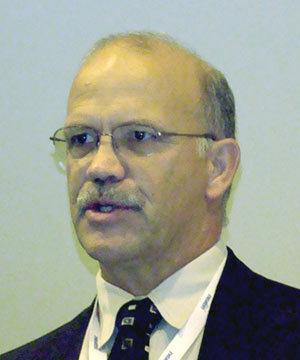
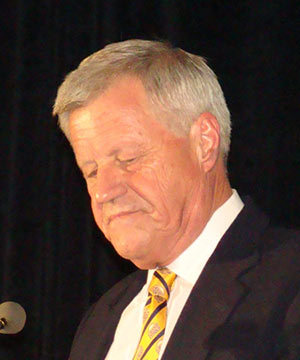

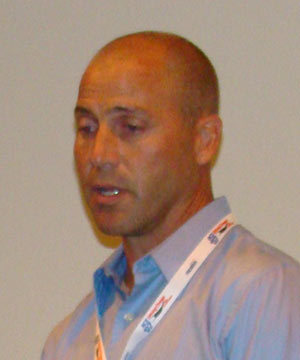
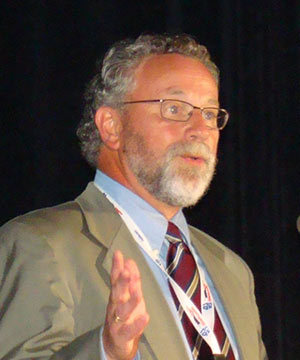
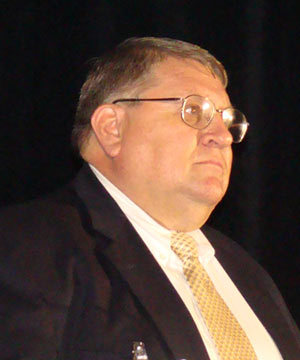
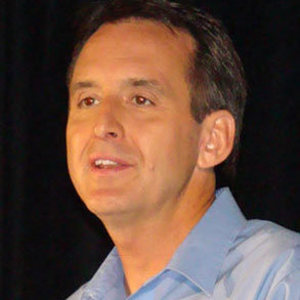
October 3, 2007
BY Ron Kotrba
As 1,800 ethanol supporters and attendees of the 20th annual American Coalition for Ethanol (ACE) Conference and Trade Show in St. Paul began filling seats in the general session opener, an emotional and humerous film short played, recapping the coalition’s 20-year exixtence. ACE President Bob Scott referred to the spirit of the American Revolution, and how a band of believers toppled England's powerful military to liberate the colonies. Sound familiar? It's analogous to the ethanol industry in its fight against Big Oil. "We are growing stronger, but so is our opposition," Scott said. "Now they fight us with false information. Perhaps it is the greatest compliment to us." Ethanol production's increase from 1.8 billion gallons in 2001 to about 5.4 billion gallons in 2006 gave ACE members and supporters plenty ofnreason to celebrate at the event in early August.
The conference featured a wide array of speakers and messages, beginning with the growing pains experienced by a rapidly growing industry. "VeraSun is now hiring," said Bob Antoine, VeraSun Energy Corp.'s manager of human resources, while advertising the corporate and plant job openings his company hopes to fill with well-trained—or at least enthusiastic— individuals. "This is a new industry, and it's short on seasoned leadership."
"The industry is skewed," he said, quipping moments later that only in the ethanol industry can someone with 26 seconds of experience and no degree command a six-figure salary. "It can be very poisonous to have a group of people gain rock star status—that's not sustainable in any company," he said.
Antoine's message was that there is a terrific need for technically trained individuals with developed skills. That why some colleges are offering educational programs specifically tailored for students interested in an ethanol industry career. Representatives from Minnesota West Technical and Community College, Lake Area Technical Institute in South Dakota and Bismarck State College in North Dakota told ACE attendees how their schools are serving the growing demand for trained ethanol professionals.
As soon as their names appear on the docket for ethanol training at Lake Area Tech, ethanol companies begin contacting the students for future job placement before a single class is taken, according to Mike Cartney, Lake Area Tech's vice president. He promoted his school's novel Energy Technology Program, the only one in South Dakota that offers specific training for plant maintenance. Program enrollment was offered for the first time in April, and by May it was full, Cartney said. Lake Area Tech's 20-month associate of applied science (AAS) degree program offers technical theory training, practical lab experience and internships with partnering companies.
Minnesota West Director Duane Carrow said the high demand for skilled labor and the premium salaries that come as a result of the short supply give him reason to call positions in the ethanol industry "gold-collared" jobs. At Minnesota West, interested students can either register for a four-semester AAS degree focusing on the biology, chemistry and process controls with which operators must be familiar, or an eight-course, 18-credit online certification program for industry newcomers and those needing to update their skill sets.
Carrow said Minnesota West's lineups are tailored specifically for operators. Students will learn, or relearn, to read instrumentations and diagrams, process and mechanical fundamentals, industrial physics, microbial ecology, pollution control basics, permitting and more.
Bismarck State Program Manager Dan Schmidt described a new bachelor in applied science degree program—Energy Management—designed for managerial and supervisory professionals. It complements the extensive course-work the college already offers those who wish to enter the operations workforce. Bismarck State has five energy programs, and a new building called the Natural Energy Center of Excellence is under construction and targeted for completion by the fall 2008 semester.
Industry Updates
ICM Inc. emissions and environmental expert, Bill Riddy, discussed the U.S. EPA's change of rules that no longer classify ethanol plants as "chemical processing plants," therefore expanding emissions caps from below 100 tons per year to below 250 tons per year as of July 2. This will tremendously expedite permitting, shrinking wait times to between two and four months, he said. The rule change pertains to new or expanding plants. Roddy said this does not mean less pollution controls, just less bureaucracy. He also urged the audience to consider using ammonium bisulfite as a moneysaving alternative to the traditional sodium bisulfite additive used in the fermentation scrubbers.
Frontline Bioenergy General Manager Norman Reese promoted the use of bubbling fluid bed boilers for better energy feedstock flexibility. He said his company is currently working with a burner manufacturer to market flexible-fueled burners,— which can utilize producer gas—from gasifying biomass or natural gas to fire a boiler.
Mark Shmorhun, Delta-T Corp.'s vice president of project development, said reaching a water consumption rate of three gallons per one gallon of ethanol produced is not hard to do, and 11/2 gallons of water per gallon of anhydrous alcohol is not unachievable. The goal, however, is zero water consumption. To help get there, Shmorhun said air could be used instead of water in the cooling tower, to reduce drift. He also mentioned sludge and membrane separation units that Delta- T is now demonstrating and plans to roll out to its customers in 2008.
On the cellulose front, Kevin Kephart, vice president for research and graduate dean at South Dakota State University, said there has been little progress made in overcoming the problem of lowering lignification in forage crops by effectively manipulating genetics to manage their biological structures. He warned of the dangers of monoculture crops, and promoted the mixing of grasses like prairie cord grass, big blue stem, switchgrass, miscanthus and others. "Harvesting is quite a nut to crack," Kephart said.
As the blame-game circling global warming rages on, Chris Zygarlicke with the Energy and Environmental Research Center (EERC) in Grand Forks, N.D., says the loss of carbon dioxide in biochemical cellulose conversions bodes well for the development of thermochemical means when viewed against the backdrop of carbon emissions and climate change. Zygarlicke also said he's disappointed in the U.S. DOE grant program because it favors the big players. "As researchers, we like to see small-scale investments to prove these things out," he told the audience.
When asked about a timeline for the commercialization of cellulosic ethanol production, Zygarlicke said these DOE grant winners have three years to produce 10 MMgy to 20 MMgy of ethanol. "We have a three-year window—and then we'll know," he said.
BlueFire Ethanol Inc., formerly Arkenol, has been working for years toward commercializing cellulosic ethanol using a concentrated acid hydrolysis pretreatment process. A Japanese pilot plant using this technology has been converting wood waste to ethanol for four years, and BlueFire CEO Arnie Klann said it yields 70 gallons per ton of feedstock. His continuous process requires no enzymes or genetically modified organisms for pretreatment, and avoids the problems encountered with dilute acid hydrolysis—the creation of yieldrobbing fermentation inhibitors he said.
Klann said his company will break ground in October in Lancaster, Calif., on a different, smaller project than the one for which BlueFire received its DOE grant. He said the Lancaster plant will utilize the acetone, butanol and ethanol (ABE) process to make ethanol and biobutanol. High capital costs plague BlueFire's plans and range from $7.30 per installed gallon of a 16 MMgy plant, to $5 per installed gallon for a 55 MMgy facility. "We'll never get much lower than $4 per installed gallon," he said, adding that the exotic metals required in BlueFire plants preclude it.
Poet LLC’s Larry Ward said his company is still negotiating with the DOE for the full grant award of $80 million, which will be used to get Project LIBERTY (Launch of an Integrated Bio-refinery with Eco-sustainable and Renewable Technologies in the Year 2009) underway at its corn-to-ethanol plant in Emmetsburg, Iowa. The collocated biomass project will fractionate corn fiber and harvested stover—including the corncobs—to make ethanol. Ward said once negotiations with DOE are finished, a 30-month time clock starts ticking.
Minnesota Gov. Tim Pawlenty thanked ACE members for their courage, vision and appetite for risk. As chair of the National Governors' Association, Pawlenty invited ACE to participate in discussions over the next year on his Clean Energy Future campaign. "Rather than having the future dumped on us, let's go out and invent it ourselves," he said.
House Agriculture Committee Chairman Peterson said he was proud to call ACE founder Merle Anderson his friend. Peterson said the House version of the energy bill didn't include an increased renewable fuels standard (RFS) because it became intertwined with Corporate Average Fuel Economy standards, coal-to-liquid technology and global warming, among others. "It got all mucked up in that deal, so we decided not to include it," he said, adding that the Senate version included an RFS provision of more than 20 billion gallons of renewable fuels coming from sources other than starch. "In my opinion, that's a little bit overdone," he said.
Peterson said the House Farm Bill extends the Commodity Credit Corporation's Bioenergy Program, which has been instrumental in growing out the modern ethanol industry. Peterson said another energy bill will be tossed around in the fall, which will likely incorporate provisions addressing global warming, carbon emissions and other environmental aspects. However, Peterson warned, "We don't want to hogtie this industry before it gets off the ground."
===== SIDE BAR =====
Is Corn to Blame for Higher Food Prices?
It's heard everywhere: Ethanol's demand on corn is pushing up corn prices and, as a result, the cost of everything else. John Urbanchuk, economist and director of LEGC LLC, presented evidence contradicting ethanol's overstated role in rising food prices as reported by the popular media, during his presentation at the 20th annual ACE Conference. "Critics say you are all responsible for higher food prices," he told the ethanol crowd. Ten percent of consumer expenditures are devoted to food, and only 23 percent of all food products are affected by what happens in the corn market, Urbanchuk said. For two years there's been very benign inflation, and food really hasn't raised much in price, he said. Now there's an increase but Urbanchuk said rather than blaming corn prices one should consider the damage done by higher energy and marketing costs.
Urbanchuk studied the impacts of increasing corn and gasoline prices each by a dollar. A 33 percent increase in the price of crude oil equals approximately a $1 increase in gas prices at the pump. Also, a $1 per bushel increase in corn prices represents a 33 percent rise in corn prices. Using the elasticities of energy prices on food found in research literature, Urbanchuk determined that a 33 percent increase in energy impacted overall food prices by between 0.6 percent and 0.9 percent, whereas a 33 percent increase in corn prices drove up food by 0.3 percent. In other words, when increases are relatively equal, the price of corn has less than half the impact on food prices that energy costs. Does higher priced corn still affect food prices? Yes, but the effect is relatively small and overshadowed by energy and weather-related price increases. If cereal is $2 a box, only 14 cents of that price is represented by the grain. The remaining 93 percent of the "value" is in the processing, packaging, marketing and transportation, all of which are affected much more by the cost of energy than corn.
==============================
Ron Kotrba is an Ethanol Producer
Magazine senior staff writer. Reach him
at rkotrba@bbiinternational.com or (701)
746-8385.
Advertisement
Advertisement
Advertisement
Advertisement
Related Stories
U.S. fuel ethanol capacity fell slightly in April, while biodiesel and renewable diesel capacity held steady, according to data released by the U.S. EIA on June 30. Feedstock consumption was down when compared to the previous month.
XCF Global Inc. on July 8 provided a production update on its flagship New Rise Reno facility, underscoring that the plant has successfully produced SAF, renewable diesel, and renewable naphtha during its initial ramp-up.
FutureFuel idles biodiesel production amidst regulatory uncertainty, shifts full focus to specialty chemicals growth
FutureFuel Corp. on June 17 announced it will temporarily idle its biodiesel facility upon completion of its remaining contractual obligations, anticipated to occur by the end of June. The company is shifting its focus to specialty chemicals.
The U.S. EPA on June 18 announced 1.75 billion RINs were generated under the RFS in May, down from 2.07 billion that were generated during the same period of last year. Total RIN generation for the first five months of 2025 reached 9.06 billion.
TotalEnergies has announced the company expects its facilities will be able to produce more than half a million tons of SAF a year by 2028 to cover the increase in the European SAF blending mandate, set at 6% for 2030.
Upcoming Events










